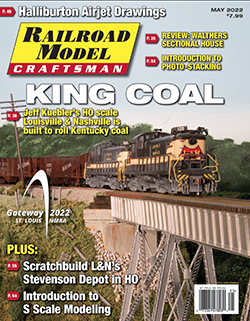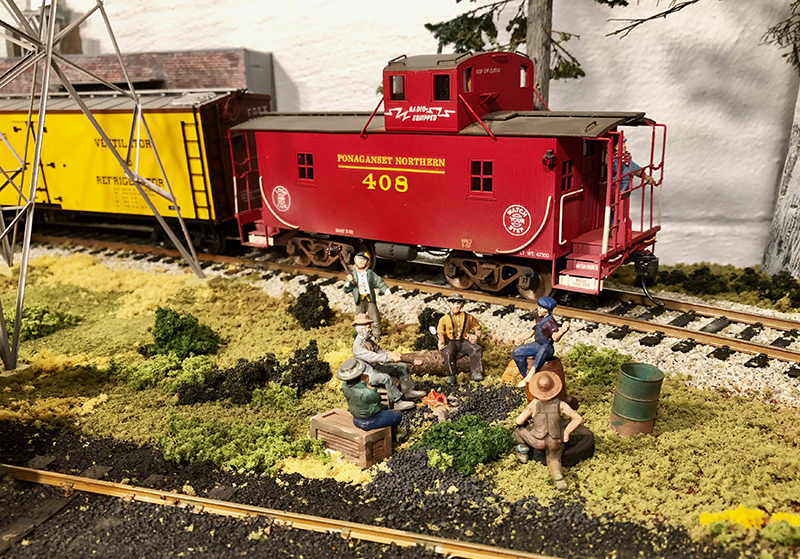 Hoboes have been around almost since the railroads were first built. However, they were known as migrants, vagrants, drifters, or bums. The word “hobo” was first mentioned in 1888, according to the Merriam-Webster dictionary. The Depression-era firmly established the legend of the hobo through variou novels, music, and movies. The camaraderie of hobo camps, of men sharing what little they had with others they hardly knew, and of sympathetic housewives putting out food for them, took on a more positive tone. These were honest but desperate men seeking work by riding the rails.
Hoboes have been around almost since the railroads were first built. However, they were known as migrants, vagrants, drifters, or bums. The word “hobo” was first mentioned in 1888, according to the Merriam-Webster dictionary. The Depression-era firmly established the legend of the hobo through variou novels, music, and movies. The camaraderie of hobo camps, of men sharing what little they had with others they hardly knew, and of sympathetic housewives putting out food for them, took on a more positive tone. These were honest but desperate men seeking work by riding the rails.
When Win Richter (author Dave’s father) graduated from college in central Wisconsin in 1934, jobs were scarce. It was the middle of the Great Depression. Growing up on a farm, he worked his way through high school and college, mainly in produce canneries. He now sought something more.
Like millions of men, he hopped trains to find work somewhere else. He became a hobo. Sneaking aboard Chicago & North Western and Milwaukee Road freights, he made his way to Minnesota. There he found Great Northern and Northern Pacific railroads. He was never clear about whose tracks he followed. Probably he didn’t know. He certainly didn’t care. Riding in boxcars and open gondolas, he survived by eating cold potatoes and beans and pretty much any other food he could scavenge, beg, or steal. Once he made it to the West Coast, as all hoboes found at the end of the line, there was no land of “milk and honey,” or jobs, or money. The economy was the same in Portland and Seattle as it was in Milwaukee and Minneapolis. After a few weeks of odd jobs, he headed east over the same tracks.
Dave’s father said he never had any run-ins with railroad workers. Unlike the sadistic conductor Shack, played by Ernest Borgnine in the 1973 film “Emperor of the North,” many railroaders were sympathetic to hoboes aboard their trains. Picture the 1976 movie “Bound for Glory” as closer to reality. Railroad workers knew they were lucky to have jobs and were only a few paychecks away from such a life themselves.
Some of us recall old Varney ads which featured hoboes lounging on freight cars or sharing tales of woe in temporary camps. Except on our layouts, hoboes are becoming pretty rare. But we have fond memories of them.
Following the end of World War Two, model train makers, such as Lionel and A.C. Gilbert, recognized an opportunity and added hoboes to their models. Soon hoboes were found riding in boxcars and sitting around electric campfires. Lionel produced a gondola with a cop chasing a hobo. Later the cop and hobo migrated to the roof of a boxcar. Others copied with similar products. The hobo as part of railroading was firmly established. Hobo figures are now available in every scale, from Z through G. Tiny hobo camps, often illuminated and sometimes animated, abound. Beautifully painted figures of hoboes sold widely.
Alas, while the legendary hobo appears as popular as ever on layouts and aboard model trains, the real hobo has all but disappeared. Faster trains, secure and guarded freight yards, and aggressive police who arrest trespassers have combined to make the hobo almost extinct. A few still ride the rails, but their numbers are nowhere near what they were a century ago.
As for Win, he hoboed (yes, it is a verb) after a few months back to the upper Midwest and landed a job in Duluth, Minn., as an assistant manager of an S.S. Kresge dime store. As far as we know, he never hopped a train again. He said it was a miserable experience. He was cold, wet and hungry most of the time.
We also don’t know if Dave’s father ever had a hobo name, but as well-known author Jack London wrote in his 1907 book “Hoboes That Pass in the Night,” names other than their given one were common among hoboes.
Here’s London: “‘Monikers’ are the nom-de-rails that hoboes assume or accept when thrust upon them by their fellows. Leary Joe, for instance, was timid and was so named by his fellows. A favorite device of hoboes was to base their moniker on the localities from which they hail, as: New York Tommy, Pacific Slim, Buffalo Smithy, Canton Tim, Troy Mickey, and Connecticut Jimmy.”
Hoboes were fond of using “Kid” in their names, such as Buck Kid, Blind Kid and Swift Kid. Most of us won’t experience riding the rails like that, so we’ll have to be satisfied with our miniature worlds, where even the hoboes are warm and dry. —Scott “Kid” Williamson and David “Kid” Richter



